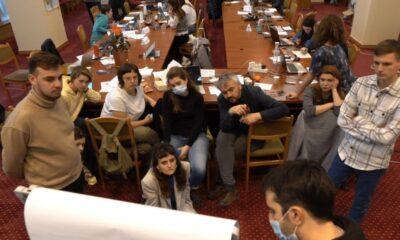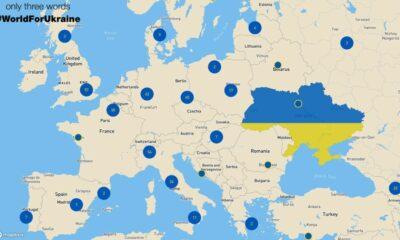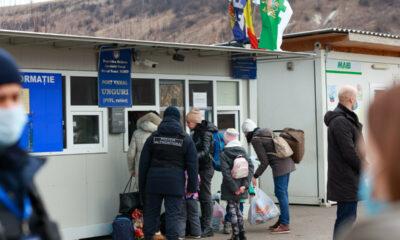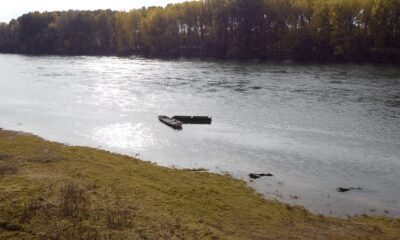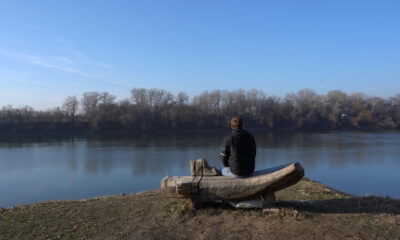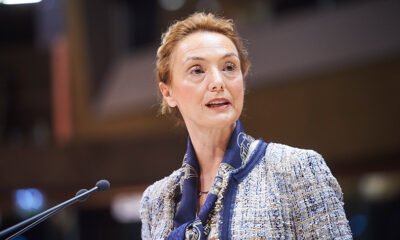Economy
11 countries in Central, Southeastern Europe hold energy summit
Reading Time: 3 minutesThe prime ministers of eleven countries in Central and Southeastern Europe met on February 24 in Budapest, for the first Energy Security Summit in this region. Hungary initiated the meeting as the current chairman of the Visegrad Four group of Central European countries, inviting the other seven in a Visegrad Plus format, with the potential for institutionalization on energy issues.
By Vladimir Socor
Hungary hosts region-wide summit on energy security
The prime ministers of eleven countries in Central and Southeastern Europe met on February 24 in Budapest, for the first Energy Security Summit in this region. Hungary initiated the meeting as the current chairman of the Visegrad Four group of Central European countries, inviting the other seven in a Visegrad Plus format, with the potential for institutionalization on energy issues. Heads of government from Hungary, the Czech Republic, Poland, Slovakia, Austria, Bulgaria, Romania, Slovenia, Croatia, Serbia, and Bosnia-Herzegovina attended the meeting, along with representatives of European institutions and the United States.
The eleven countries’ total population exceeds 100 million, the great majority of whom are European Union citizens. Most of these countries face similar challenges in the energy sector, notably the need to diversify from dependence on Russia (which the meeting carefully avoided highlighting). Holding regular prime-ministerial meetings would raise the energy security agenda to the highest political level, on a region-wide basis, within the existing framework of EU internal and external energy policies.
The summit’s communiqué called for resilience measures to deal with possible supply disruptions, as well as for the diversification of suppliers and routes to the region, particularly for natural gas. The governments express their readiness to harmonize their energy projects, support each other’s diversification efforts, advance the EU’s common energy policies, and use EU funding for implementing projects of region-wide interest.
The prime ministers called on the EU Commission to develop emergency plans and effective solidarity mechanisms for responding to supply disruptions. Noting the lack of adequate interconnections, and limited possibilities for reversing gas flows among these countries for emergency assistance, the communiqué urges higher national investments in connectivity and storage projects, with contributions from the EU’s cohesion policy funds. The communiqué emphasizes the need for North-South interconnections, which are almost entirely missing, since Soviet-legacy pipelines run exclusively East-West.
Formation of a unified internal gas market in the EU would substantially enhance these countries’ energy security. To advance the market’s unification, the prime ministers call for shifting the contractual gas delivery points to the EU’s external borders in the future (the fact left diplomatically unsaid is that Gazprom-led projects, such as Nord Stream and South Stream, would perpetuate EU market fragmentation on a number of counts, including delivery points located inside the EU’s borders).
The prime ministers’ communiqué reaffirms support for the EU-planned Southern Energy Corridor. A fine-print footnote mentions noncommittally that several of these countries are also involved in [Gazprom’s] South Stream project. This codicil is traceable to Serbia’s and Slovenia’s unquestioning belief in South Stream, as well as Croatia’s late-surging hopes in a Russian oil and gas bonanza (EDM, January 14, February 26).
The summit endorsed the Hungarian government’s proposal for a gas delivery and transmission concept, involving a liquefied natural gas (LNG) import terminal on Poland’s Baltic coast and another LNG terminal on Croatia’s Adriatic coast, both to be linked through interconnectors with the planned Nabucco pipeline (Bulgaria-Romania-Hungary-Austria). Hungarian Prime Minister Gordon Bajnai describes this concept as a region-wide energy security triangle (MTI, February 25).
An interconnector would run from Poland via Slovakia, adding to the interconnectors currently under advanced construction between Croatia and Hungary and between Hungary and Romania. As a net result, Central Europe could be linked to natural gas or LNG reception points on the Baltic, Adriatic, and Black Sea coasts, at EU borders. Thus far, however, the EU is funding a modest share of the interconnector projects.
That framework, if implemented, can substantially advance the fulfillment of the NETS (New Europe Transmission Systems) concept, launched in 2007 by the Hungarian energy company MOL. The goal is to interconnect the gas transmission systems of Central and Southeastern European countries, in line with EU market unification goals.
LNG import terminals in Poland and Croatia have been under discussion for a number of years, without results. However, the surge in LNG availability since 2009, at competitive prices against pipeline-delivered gas from Russia, brightens the prospects for those LNG terminals.
Attending the summit in Budapest, the US State Department’s special envoy for energy affairs Richard Morningstar proceeded to Croatia for follow-up consultations. That country’s Prime Minister, Jadranka Kosor, assured the Budapest summit that Croatia would efficiently convey seaborne oil and gas supplies from the Adriatic coast to the inland countries. She also announced her government’s commitment to completing the LNG terminal and its dedicated pipeline inland by 2014. However, Kosor awaits a Russian offer to join South Stream during her March 2-3 visit to Moscow. The LNG Adria project would face the risk of further delays if Croatia does join the South Stream project (Poslovni Dnevnik, February 26; Novi List, Vecernji List, March 2).
The prime ministers have decided to hold regular meetings in this format, for continued discussion on improving energy security in the region and within the EU. They have also decided to create inter-governmental working groups at expert level, dealing with specific energy projects of common interest. The priorities include (not necessarily in hierarchical order) LNG, Nabucco, North-South gas interconnectors, other interconnections in the region, and diversification of crude oil supplies (Heti Vilaggazdasag, February 25).
Economy
Moldova will receive a disbursement of 36 million euros as part of the the Economic Recovery Plan
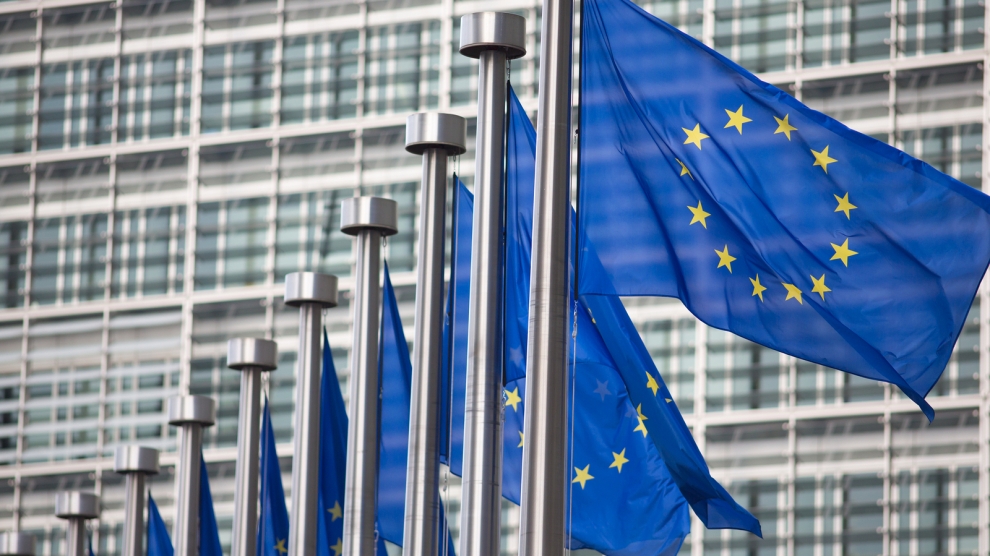
This week, the European Commission approved the disbursement of 36 million euros in grant money for the Republic of Moldova. The announcement was made by Deputy Director-General for Neighbourhood Policy and Enlargement Negotiations at the European Commission, Katarina Mathernova, who paid an official visit to the Republic of Moldova between September 13-15, together with Managing Director for Russia, Eastern Partnership, Central Asia, Regional cooperation and OSCE, at the European External Action Service, Michael Siebert.
The EU officials had meetings with President Maia Sandu, Minister of Foreign Affairs and European Integration, Nicu Popescu, Speaker of Parliament, Igor Grosu, Prime Minister of the country, Natalia Gavrilita, as well as key representatives of Government, international financial institutions and the civil society, according to a press release issued by the Delegation of the European Union to the Republic of Moldova.
Beside such topics as the EU-Moldova relations and prospects, the priorities of the reform agenda of the new Moldovan Government, preparations for the Eastern Partnership Summit at the end of the year and the Transnistrian conflict settlement, the officials also discussed the EU assistance in support of reforms and the Economic Recovery Plan for Moldova, which was announced in June with a total EU support of 600 million euros over the next 3 years.
“The first measures under the Economic Recovery Plan will shortly materialize, with the expected disbursement of 36 million euros in grant money under budget support programmes to support the authorities’ efforts to fight against the consequences of the pandemic. Moldova can count on EU’s assistance on its path to reforms and to recovery, bringing tangible results to citizens,” Katarina Mathernova stated.
The plan is based on assistance provided by the European Union through various bilateral and regional instruments, aiming to mobilize the funds in the form of grants, loans, guarantees and macro-financial assistance.
“The Economic Recovery Plan for the Republic of Moldova involves much more, not just this financial support provided immediately. It must help digital transformation, strengthen infrastructure, energy efficiency, education and support small and medium-sized enterprises,” the EU official also said.
As Prime Minister Natalia Gavrilita informed, “The Economic Recovery Plan and the 5 flagship initiatives for Moldova in the Eastern Partnership will directly contribute to the reform and consolidation of institutions, stimulate long-term socio-economic development, bring direct benefits to citizens, and unleash new economic opportunities through promoting the green agenda and digitization. Small and medium-sized enterprises (SMEs) have been hit hard by the crisis. Promoting and diversifying access to finance and reducing collateral requirements will be essential in supporting economic operators. We are grateful to the EU partners who will launch two programs to support 50 000 independent Moldovan SMEs to adapt to the new conditions.”
President of the Republic of Moldova, Maia Sandu, welcomed the decision of the European Union to disburse about 745 million lei in grant money, as the official page of the President’s Office announced. “EU support comes after a long period of freezing of European assistance, caused by former governments. We managed to relaunch the political dialogue with the European Union and resume financial assistance. The Republic of Moldova is gradually regaining the trust of its strategic partners. This European support is also a signal of encouragement for the new Government team in its commitment to clean up the institutions, fight corruption and launch development programs in the country,” said Maia Sandu.
Photo: unknown
Economy
Romania and Moldova signed a partnership memorandum pledging to cooperate in promoting their wines
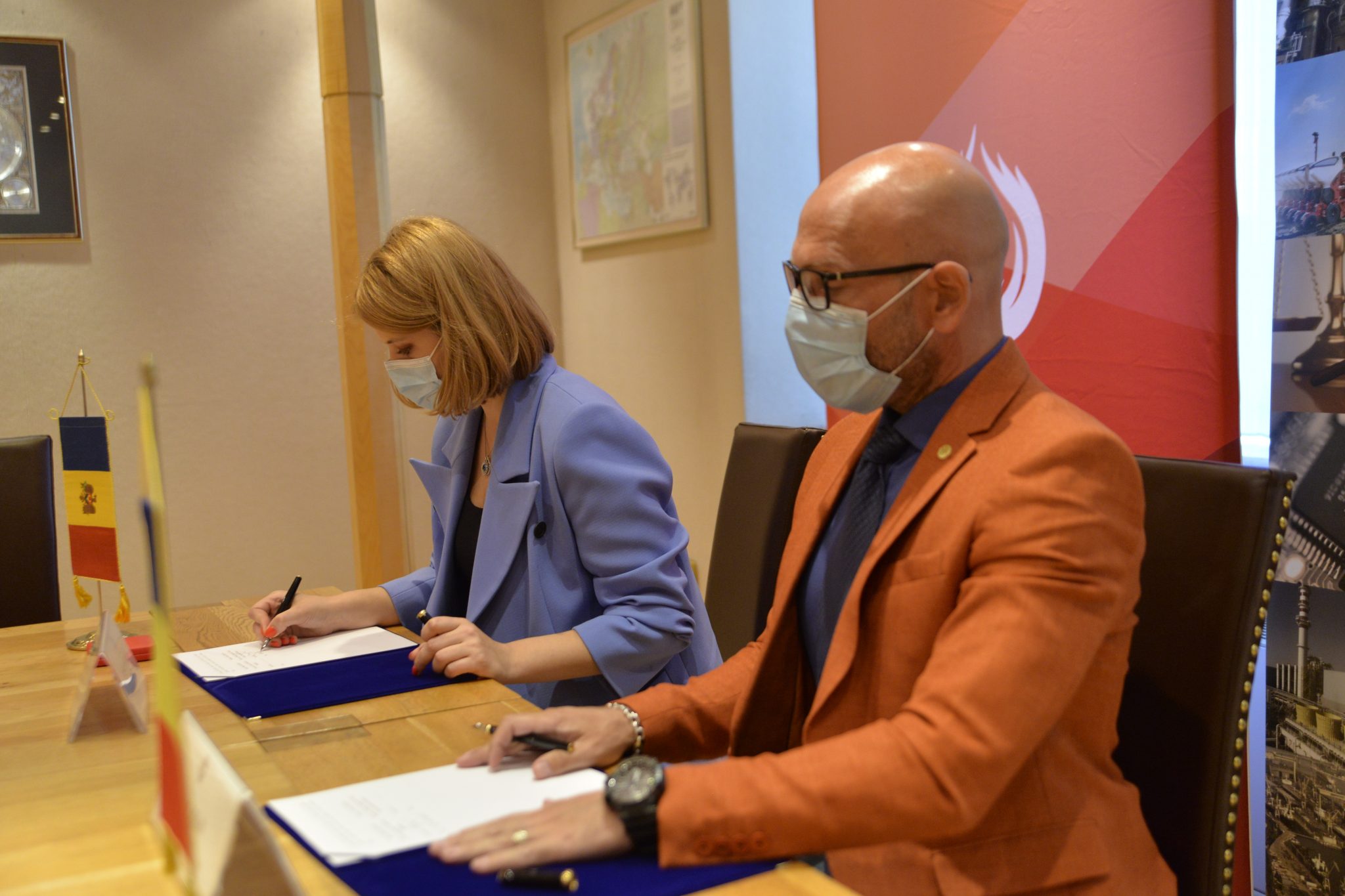
The Chamber of Commerce and Industry of Romania (CCIR) and the National Office for Vine and Wine (NOVW) of the Republic of Moldova signed, last week, a memorandum of cooperation on organizing joint promotional activities in the markets of common interest, as the CCIR announced.
China, Japan or the USA are just some of the markets targeted by the Romanian and Moldovan institutions. The memorandum also involves advertising activities for wines from common indigenous varieties, promoting the oeno-tourist region, developing a tourist route in the two states, exchange of experience, study visits, and mutual support in identifying new export opportunities. “We are very confident that this collaboration between our organizations will lead to sustainable economic growth and a higher degree of well-being among Moldovans and Romanians,” claimed Deputy Secretary-General of CCIR, Bogdan Visan.
On the other hand, Director of the NOVW, Cristina Frolov, declared that no open competition with Romania is aimed at the governmental level of the Republic of Moldova. “This request for collaboration is a consequence of the partnership principle. Romania imports 10-12% of the wine it consumes, and we want to take more from this import quota. Every year, the Romanian market grows by approximately 2.8%, as it happened in 2020, and we are interested in taking a maximum share of this percentage of imported wines without entering into direct competition with the Romanian producer,” the Moldovan official said. She also mentioned that Moldova aims at increasing the market share of wine production by at least 50% compared to 2020, and the number of producers present on the Romanian market – by at least 40%.
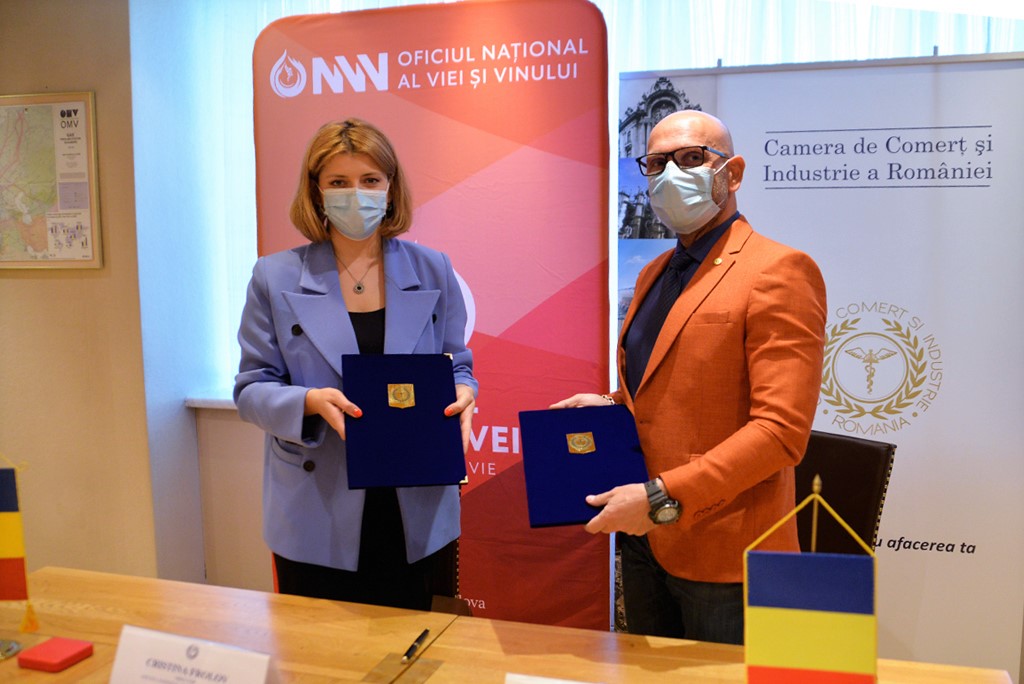
Source: ccir.ro
**
According to the data of the Romanian National Trade Register Office, the total value of Romania-Moldova trade was 1.7 billion euros at the end of last year and over 805 million euros at the end of May 2021. In July 2021, there were 6 522 companies from the Republic of Moldova in Romania, with a total capital value of 45.9 million euros.
The data of Moldova’s National Office of Vine and Wine showed that, in the first 7 months of 2021, the total quantity of bottled wine was about 27 million litres (registering an increase of 10% as compared to the same period last year), with a value of more than one billion lei, which is 32% more than the same period last year. Moldovan wines were awarded 956 medals at 32 international competitions in 2020.
Photo: ccir.ro
Economy
Moldova’s hope to be a top walnut exporter and its main difficulties

The Republic of Moldova has perfect weather conditions for growing walnut trees, that creating a great potential of walnut production and trade, especially on international markets, where the demand is way higher than the product’s supply. National and international experts believe that the country’s walnut production industry is on the verge of important transformations, which could lead to increased yields, quality and competitiveness worldwide.
According to authorities, Moldova exports 34-35 thousand tons of walnuts in shell, which is about 7% of the total export of fruit and 5% of the total export of horticultural products. The export value is assessed as being $120 million, that being 57-60% of the total fruit export value and about 50% of horticultural export value. Most of walnut crops are exported to the EU countries, such as France, Germany, the Netherlands, Romania and Austria. The country’s exports were among the world’s top 10 when it comes to the highest dollar value of the product during 2020.
Viorel Gherciu, Minister of Agriculture and Food Industry, pointed out that the production in the domestic walnut industry has increased by 55% in the last five years, which ranks Moldova among the main producers in the world.
“The biggest opportunity for this industry is that we are in the geographical proximity of the largest walnut import area in the world, which is the European Union, with almost 40% of total imports in the world. We are on the EU border, with privileged relations, with an Association Agreement. We already enjoy a good relationship in working with European importers, they trust our processors. A very close collaboration has been created and this is, in fact, the guarantee for those who invest in the area,” claimed the president of the Walnut Producers Association, Oleg Tirsina.
The data provided by the National Bureau of Statistics show that there are 34.7 thousand hectares of walnut plantations in the country. 20.90 hectares are represented by orchards. 75% of planted orchards are formed of old varieties trees. 30-35% of the exported production comes from orchards, the rest comes from individual farmers and plantations along the roads. This means that the quality of walnut production is not at its maximum potential. Developing commercial plantations through orchards modernization and extension of walnut varieties would provide double yield and better quality, experts say.
Governmental support in the form of subsidizing solutions, foreign investments and credit options are indispensable for the industry development. One of the financing options is the credit line of the European Investment Bank Project. Since 2016, 15 producers and processors of nuts, almonds and hazelnuts have benefited from these loans with the total amount of investments worth 8.7 million euros. A further extension of the project would provide another 60 million euros for the modernization of the horticultural sector in general and for harvesting organic walnuts in particular.
Photo: heymoldova.com


